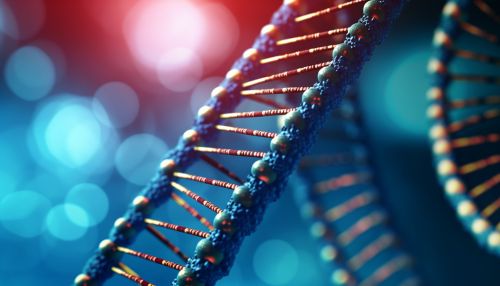Genetic linkage
Introduction
Genetic linkage is a fundamental concept in the field of genetics, referring to the tendency of DNA sequences that are close together on a chromosome to be inherited together during the meiosis process. This phenomenon is a result of the chromosomes' physical properties and the way they undergo recombination during meiosis.


History
The concept of genetic linkage was first introduced by the British geneticists William Bateson and Reginald Punnett in 1905. They observed that certain traits in sweet peas seemed to be inherited together more often than would be expected by chance, leading them to hypothesize the existence of some form of physical connection between genes. This idea was later confirmed and expanded upon by Thomas Hunt Morgan and his students at Columbia University, who demonstrated the existence of linkage in fruit flies and developed the first genetic maps.
Principles of Genetic Linkage
Genetic linkage is closely related to the principle of independent assortment, one of the laws of inheritance proposed by Gregor Mendel. According to this law, different genes independently separate from one another when reproductive cells develop. However, this law only holds true for genes that are located on different chromosomes or are far apart on the same chromosome. When genes are close together on the same chromosome, they do not assort independently and are said to be linked.
The degree of linkage between two genes can be quantified by measuring the recombination frequency, which is the proportion of offspring in which recombination between the genes has occurred. A recombination frequency of 0% indicates that the genes are completely linked and always inherited together, while a recombination frequency of 50% indicates that the genes assort independently and are not linked.
Genetic Mapping
Genetic linkage is a key tool in the construction of genetic maps, which depict the relative positions of genes on a chromosome. The distance between genes on a genetic map is measured in centimorgans (cM), a unit that corresponds to a 1% chance of recombination occurring between the genes. The greater the recombination frequency between two genes, the further apart they are on the genetic map.
Linkage and Genetic Disorders
Understanding genetic linkage is crucial in the study of genetic disorders. Many genetic disorders are caused by mutations in a single gene, and these disorders can often be traced through families using linkage analysis. This involves looking for patterns of inheritance of genetic markers, which are DNA sequences with known locations on chromosomes, in affected and unaffected individuals. If a particular marker is found to be linked with the disease, it can be inferred that the disease gene is located near that marker.
Linkage Disequilibrium
In population genetics, the concept of linkage disequilibrium refers to the non-random association of alleles at different loci. In other words, the frequency of the occurrence of certain combinations of alleles is higher than would be expected if the loci were independently assorting. Linkage disequilibrium can be caused by a number of factors, including genetic linkage, selection, mutation, genetic drift, and population structure.
